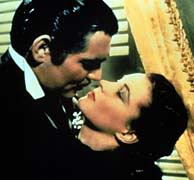The Academy announced Tuesday that, beginning next year, movies will be nominated for Best Picture using a modified form of the choice voting form of proportional voting used for nominations in nearly all other categories. The new rules will always result in at least five nominated movies and as many as ten, but not a fixed number. The Academy has long used choice voting to select nominees and adopted instant runoff voting to select the Best Picture winner in 2009.
FairVote confirmed with Academy leader how the new rules will work. Under the new Best Picture nomination system, Academy voters will submit ballots ranking their top 5 movies in order of preference.The job for those voters (likely to be about 5,000 out of a pool of 6,000) is easy: just indicate their preferred movies in order of preference.
Best Picture nominees will be chosen according to the following process -- a more complicated one than traditional choice voting, but still making it likely that the final set of nominees will reflect a full diversity of perspectives among Academy voters.
- First choice votes are tallied as one vote each.
- The rules for a choice voting election for ten winners then are applied -- meaning that the "victory threshold" is just over 9.1% of the total votes cast. Any picture securing at least 9.1% support at any point in the count is nominated.(Note that this threshold derives from the fact that it is the fewest number of votes that only ten winners can have. When applied to other categories like Best Actor and Best Actress, the threshold is just over one-sixth of the vote, as that is the fewer number of votes that only five winners can have.)
- If any motion picture nominee's total in first choices surpasses 11% of first choice (which is a fifth more than the 9.1% threshold -- typically in choice voting this surplus happens for any ballots beyond the victory threshold, but the Academy adds this extra "cushion"), then that nominee's "surplus" ballots above the winning threshold are distributed to next choices, with every ballot added to the totals of the next choice listed on it at an equally reduced value (with the total of those transferred values equal to the surplus beyond the victory threshold). If the second choice on the ballot has already passed the victory threshold and been nominated, then the ballot is added to the totals of the third choice, and so forth.
- This process is repeated for each nominee that has more than victory threshold.
- At this point, all pictures with less than 1% support are simultaneously eliminated. Any ballots ranking them first (or redistributed from nominated movies) are added to the totals of the next choice on the ballot that has not been nominated.
- Vote totals are examined. Any picture with at least 5% support is a nominee. All other pictures will be eliminated. The number of nominees could be as few as five (in the event that fewer than five movies secure at least 5%, the top vote-getters among movies below 5% will be nominated) or as many as ten (in the unlikely event that more than ten pictures surpass 5%, the ones with the fewest votes above 5% will be eliminated.)
As veteran entertainment journalist Steve Pond details in his highly recommended discussion of the potential impact of the new rules at The Wrap, this process will result in fewer votes actually counting for nominated movies in the final round, but will also increase the value of a movie having enthusiastic support. Very few motion pictures will be nominated that don't have close to 5% of first choices, unlike under the old rules. At the same time, it's also possible that a Best Picture nomination will go to a more iconoclastic movie that has enough strong adherents to secure 5% first choice support, but is not widely enough known or appreciated to have been able to secure 9.1% of the vote under the old rules.
The rule changes will only affect nominations for Best Picture. As in previous years, choice voting will be used to select nominees in nearly all other categories, and ranked choice voting will be used to select the ultimate winner of the Best Picture award. In another notable development, the Academy also indicated that it will soon be shifting to an electronic voting system in lieu of paper ballots, possibly as early as next year.
For FairVote's coverage of last year's Academy Awards nomination and selection process, including an authentic instant runoff voting poll that accurately predicted the Best Picture winner, see earlier posts on this blog. For more information on the election systems used by the Academy, visit:




